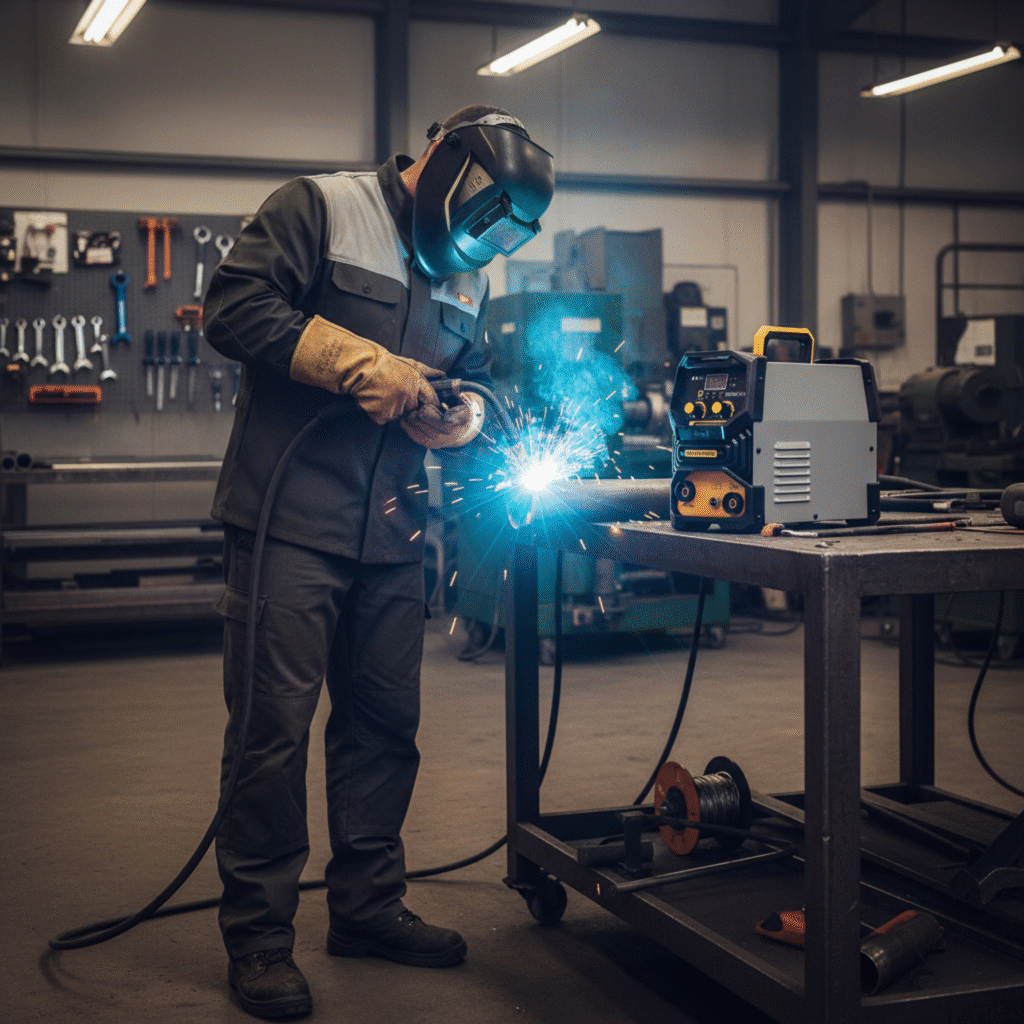
MIG welding, also known as Metal Inert Gas welding or Gas Metal Arc Welding (GMAW), is one of the most popular and versatile welding techniques used in both industrial and hobbyist applications. Its ability to weld a wide range of metals quickly and cleanly makes it a favorite among fabricators, automotive professionals, and manufacturers. In this blog, we will dive deep into understanding what a MIG welding machine is, how it works, its main components, welding process, advantages, and common applications.
What Is a MIG Welding Machine?
A MIG welding machine is a device that facilitates the process of Metal Inert Gas welding by supplying a continuous wire electrode and an inert shielding gas to the weld area. The machine controls the electrical current and wire feed rate essential to producing stable arcs and high-quality welds. The inert gas protects the molten weld pool from contamination by the atmosphere, ensuring cleaner and stronger welds.
How Does MIG Welding Work?
MIG welding creates an arc between a consumable wire electrode and the base metal. The process works as follows:
- Wire Feed: A reel of welding wire is continuously fed through the welding gun towards the weld joint.
- Electric Arc Creation: An electrical current generates an arc between the wire and the metal surface, melting both materials.
- Shielding Gas: An inert or semi-inert gas (usually argon, CO2, or a mixture) flows out of the welding gun, shielding the weld pool from oxygen and contaminants.
- Weld Formation: The melted wire and base metal fuse together to form a clean, strong weld as the metals cool.
Key Components of a MIG Welding Machine
- Power Source: Provides a steady supply of electric current, usually DC, adjustable for different welding applications.
- Wire Feeder: Controls the speed at which the electrode wire is fed into the weld pool.
- Welding Gun/Torch: Directs the electrode along with the shielding gas towards the weld joint.
- Shielding Gas Supply: Cylinders or tanks containing inert gases provide the protective atmosphere around the weld.
- Ground Clamp: Completes the electrical circuit by attaching to the workpiece.
Advantages of MIG Welding Machines
- High Productivity: Continuous wire feed allows for faster welding compared to manual methods.
- Clean Welds: Shielding gas prevents contamination, reducing spatter and post-weld cleanup.
- Versatility: Suitable for thin and thick metals, including steel, aluminum, and stainless steel.
- Ease of Learning: The semi-automatic process offers easier control for beginners.
- Automation Friendly: Frequently used in robotic and automated welding systems.
Applications of MIG Welding
MIG welding machines are widely used for:
- Automotive repair and manufacturing
- Construction and structural steel fabrication
- Shipbuilding and aerospace industries
- Pipe and tube welding
- General metal fabrication and DIY projects
Tips for Effective MIG Welding
- Choose the correct shielding gas mixture based on the base metal.
- Adjust the wire feed speed and voltage to suit the metal thickness.
- Maintain a steady gun angle (typically 10-15 degrees) and travel speed.
- Clean the workpiece to avoid contamination and poor weld quality.
- Use protective gear like a welding helmet, gloves, and apron at all times.
Final Thoughts
MIG welding machines have revolutionized metal joining by offering a reliable, fast, and clean welding process. Whether you are a professional welder or an enthusiast, mastering MIG welding fundamentals will open up numerous fabrication possibilities. This guide by Muhammed Favaz MT aims to clarify the principles and practical considerations involved in MIG welding, helping you make informed choices and improve your welding skills.
